Can You Charge a 5V Battery With a 12V Charger
Can You Charge a 5V Battery With a 12V Charger
Charging a battery is a common task for anyone dealing with electronics, but doing it incorrectly can lead to damage or even danger. A question often asked is: Can you charge a 5V battery with a 12V charger? At first glance, it may seem like a mismatch—and in many ways, it is. Using the wrong voltage can shorten the lifespan of the battery, cause it to overheat, or in worst cases, cause irreversible damage. In this comprehensive guide, we’ll explore how voltage compatibility works, what’s at stake when mismatched, and under what conditions (if any) a 12V charger might work safely with a 5V battery.
- Understanding Basic Battery Charging Principles
- Battery Types and Their Voltage Sensitivities
- What Happens When You Use a 12V Charger on a 5V Battery
- When Can You Safely Use a 12V Charger with a 5V Battery
- Best Practices for Charging a 5V Battery Safely
- Alternatives to Using a 12V Charger for a 5V Battery
- Common Mistakes and Misconceptions About Battery Charging
- The Role of Amperage in Battery Charging
- Signs You May Have Damaged a Battery
- How to Dispose of a Damaged or Overcharged Battery
- Can Smart Chargers Help
- Expert Tips for Maintaining Battery Health
Understanding Basic Battery Charging Principles
Before answering the main question, it’s essential to understand how battery charging works.
Voltage Matching Is Critical
Every battery has a specific charging voltage. A 5V battery is designed to receive a regulated 5 volts to charge properly. When you apply 12 volts directly to such a battery, you're forcing more than double the intended voltage, which can lead to overheating, swelling, or even fire.
Why Chargers Exist
Chargers are built not just to supply voltage but to regulate it according to the needs of the battery. The job of a charger isn’t just to “push” energy but to do so in a controlled, safe manner.
Battery Types and Their Voltage Sensitivities
Different types of batteries react differently to overvoltage. Understanding your battery chemistry is vital.
Lithium-Ion Batteries
These are highly sensitive to overcharging. Charging a 3.7V or 5V lithium-ion battery with 12V can lead to thermal runaway—a dangerous condition where the battery continues heating until it fails.
Lead-Acid Batteries
These are a bit more forgiving, but a 5V lead-acid battery still cannot handle 12V input safely without regulation.
NiMH and NiCd Batteries
While more robust, they still require current-limited charging. A 12V charger will damage these if not adjusted appropriately for a 5V battery.
>>See also How to Tell Which E Z GO TXT Golf Cart Model You Have
What Happens When You Use a 12V Charger on a 5V Battery
Risk of Overheating
One of the most immediate issues is that the battery will heat up quickly. Excessive heat can cause the chemical composition to break down, reducing lifespan or making the battery unsafe to use.
Irreversible Damage
Even a few minutes of overvoltage charging can permanently damage internal structures, leading to reduced capacity or complete failure.
Potential Safety Hazards
In the worst-case scenario, charging a 5V battery with 12V can cause it to explode or catch fire—particularly with lithium-based chemistries.
When Can You Safely Use a 12V Charger with a 5V Battery?
There are some exceptions, but they all involve additional hardware to step down the voltage.
Using a Voltage Regulator
If you integrate a DC-DC step-down converter, also known as a buck converter, you can convert 12V to a safe 5V for your battery. These devices are widely available and easy to integrate.
Using a Charging Circuit
Advanced charging modules, like TP4056 boards for lithium batteries, can safely handle input voltages up to 8V or 12V (depending on the design) and reduce it to charge the battery safely.
Battery Management Systems (BMS)
A BMS can monitor input voltage and prevent overcharging. However, not all systems are designed to handle 12V input directly. Make sure your BMS is rated appropriately.
Best Practices for Charging a 5V Battery Safely
To avoid damage and extend the lifespan of your battery, follow these charging tips.
Use the Correct Charger
Always use a charger rated for your specific battery. A charger rated at 5V, 1A is ideal for most 5V batteries.
Check Connector Polarity
Connecting the charger backward can also damage the battery, even if the voltage is correct.
Monitor Charging Temperature
If your battery becomes hot to the touch, disconnect it immediately. Heat is often the first sign of trouble.
Use Protective Circuits
Employing overcharge and short-circuit protection will provide extra layers of safety.
Alternatives to Using a 12V Charger for a 5V Battery
If you only have a 12V power source, here are safe alternatives.
Use a USB Car Charger
Most USB car chargers take 12V input and output a regulated 5V. These can be used to safely charge 5V batteries, especially if you have USB-chargeable battery packs.
Use a Dedicated Charging Module
Charging modules are inexpensive and tailored to battery specs. For example, TP4056 modules are ideal for lithium-ion 3.7V to 5V battery packs.
Common Mistakes and Misconceptions About Battery Charging
All Chargers Are Not Created Equal
Just because two chargers have the same voltage doesn't mean they are safe. Current rating, waveform quality, and protection features matter.
Higher Voltage Doesn’t Mean Faster Charging
Charging a 5V battery with 12V won't charge it faster—it will just damage it. Proper charging speed depends on current, not just voltage.
Battery Voltage Isn’t Always What It Seems
Some batteries labeled 5V may have nominal voltages like 3.7V or 4.2V and use a circuit to step up voltage. Always check detailed specifications.
The Role of Amperage in Battery Charging
While voltage is critical, current also plays a big role in safe charging.
What Happens With Too Much Current?
Excess current can overheat the battery or stress internal components. Even if your charger is 5V, using a 5V 3A charger on a 5V 1A-rated battery can be dangerous.
How to Match Amperage Properly
Ensure your charger's current output doesn’t exceed what the battery or charging circuit can handle.
Signs You May Have Damaged a Battery
Sometimes it’s too late. Here’s how to recognize if your battery was affected by improper charging:
- The battery swells or leaks
- It gets unusually hot during charging
- The voltage output is unstable or lower than rated
- It holds less charge than before
- There’s a strange smell or visible corrosion
If you notice any of these signs, safely dispose of the battery and do not attempt to reuse it.
>>See also Which Golf Cart Brand Is the Most Popular in 2025
How to Dispose of a Damaged or Overcharged Battery
Follow Local Regulations
Many areas have battery recycling programs. Never throw a damaged battery in the trash.
Use Battery Disposal Bins
These are often available at electronics stores or municipal centers.
Take Safety Precautions
Tape the terminals and place the battery in a plastic bag before disposing of it to prevent short circuits
Can Smart Chargers Help?
Yes, smart chargers can detect the connected battery type and adjust output accordingly.
Benefits of Smart Chargers
- Automatically stops charging when full
- Detects incorrect voltage levels
- Reduces risk of overheating
- Compatible with multiple battery types
However, they are not foolproof. You still need to ensure voltage compatibility manually.
Expert Tips for Maintaining Battery Health
- Avoid fast charging unless the battery supports it
- Store batteries in cool, dry places
- Charge regularly to prevent deep discharge
- Use proper chargers only
- Avoid full discharge cycles for lithium-ion batteries
These tips will help extend your battery’s life and performance.
To put it simply: No, you should not charge a 5V battery directly with a 12V charger—doing so can be dangerous and may permanently damage your battery. However, with the correct voltage regulation tools such as buck converters or specialized charging circuits, it’s possible to safely step down the voltage and make it work.
Always verify your charger and battery specifications before connecting them. Using proper components ensures not only longer battery life but also safety for you and your devices.
Whether you're working on a DIY project or replacing batteries in everyday devices, the right charging method is key. Never guess—always check.

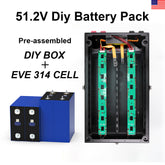

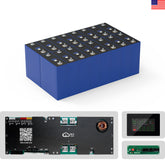

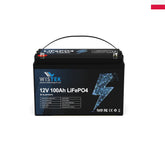
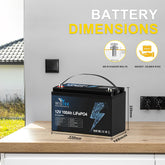

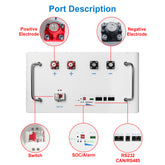


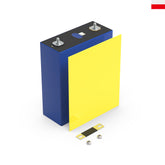

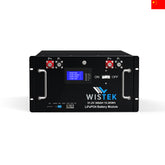
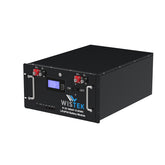
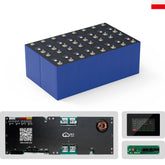








Leave a comment
All blog comments are checked prior to publishing